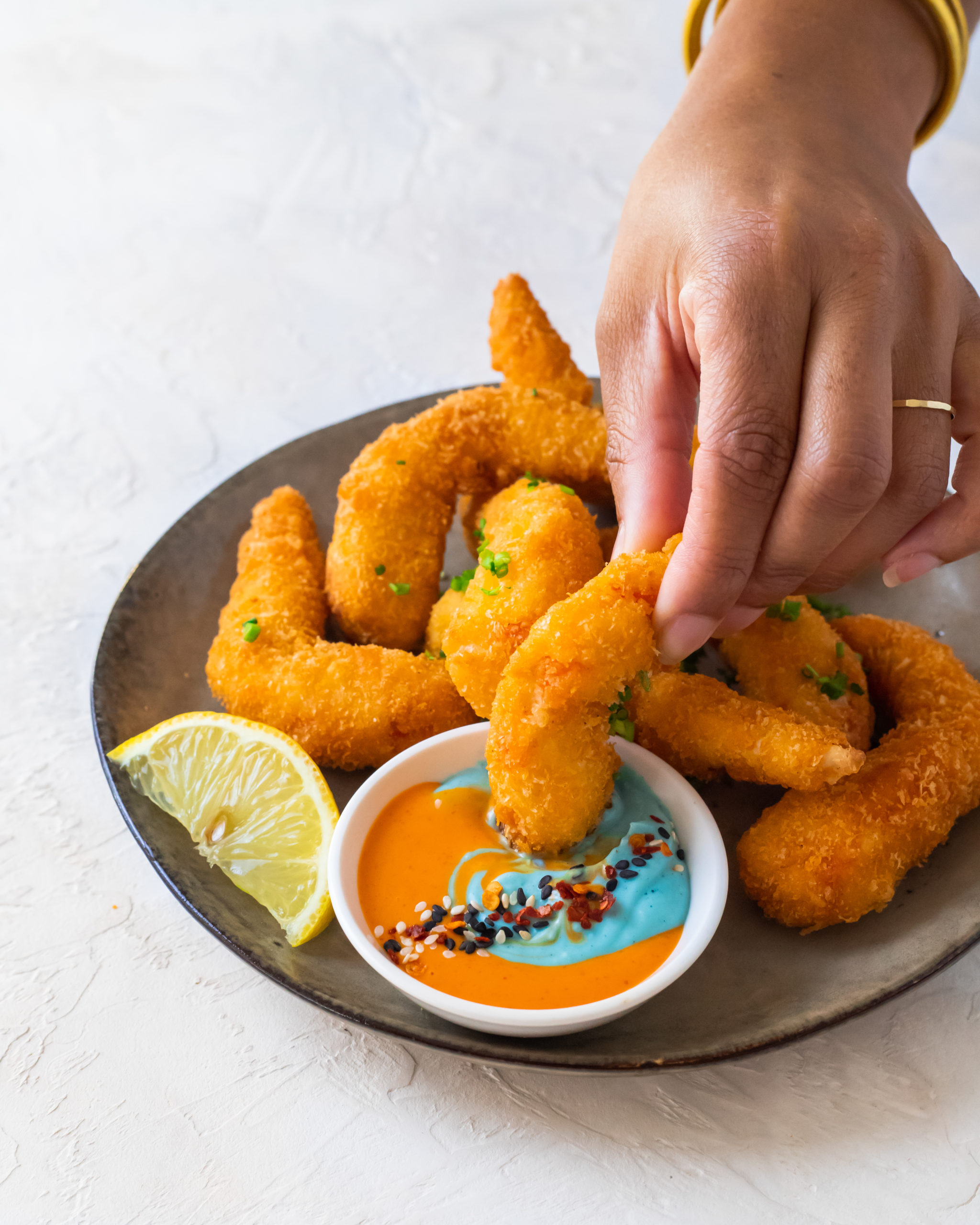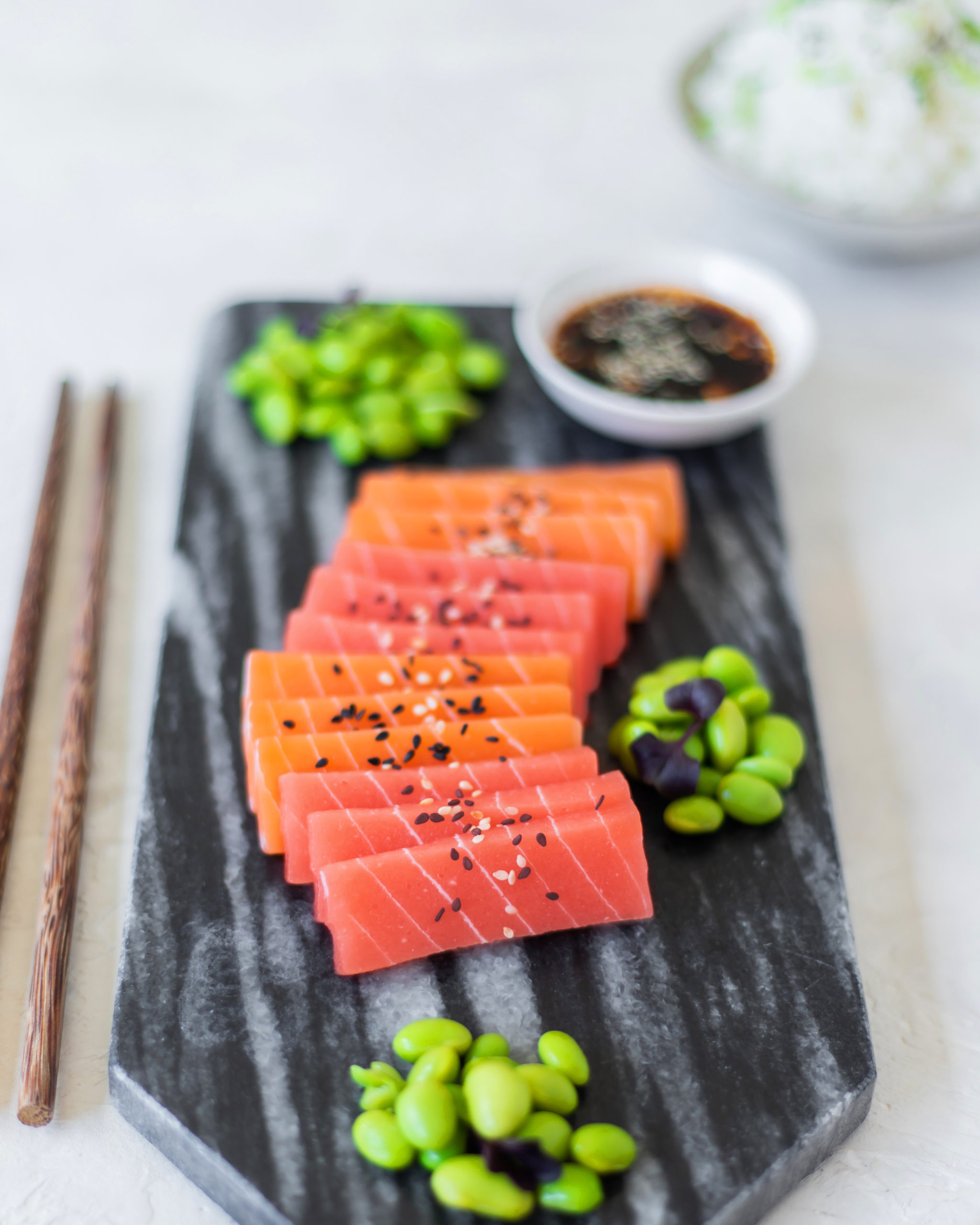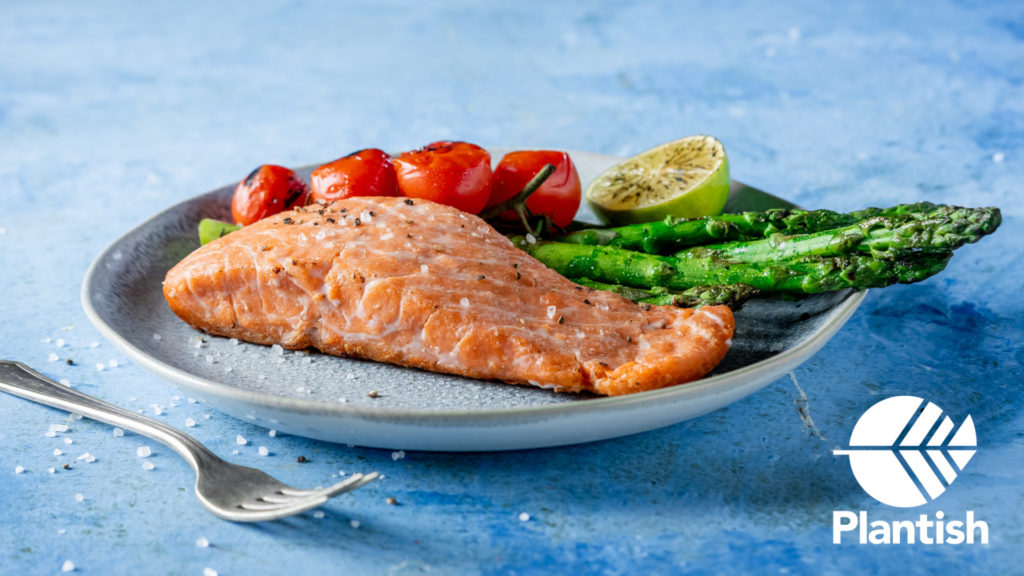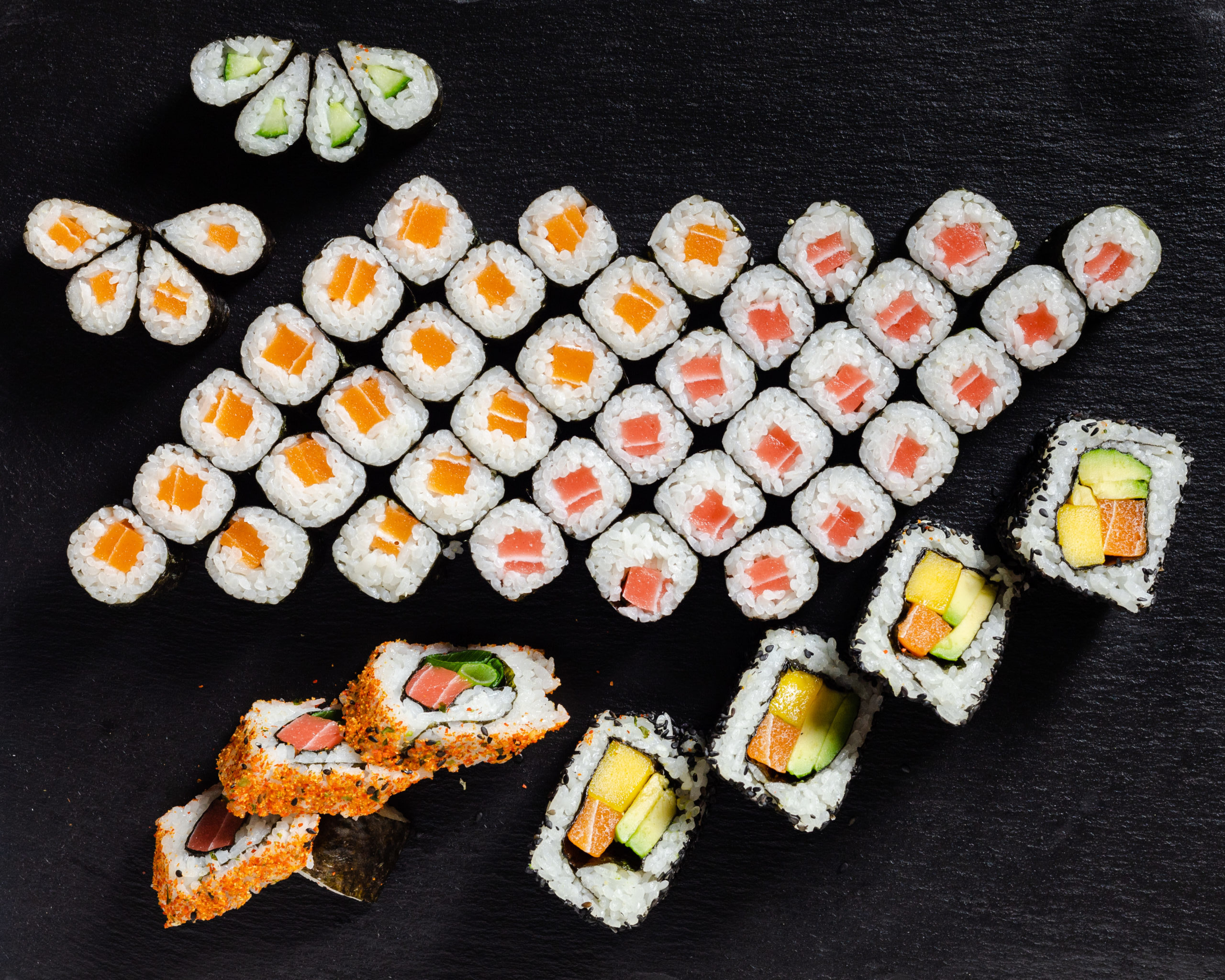7 Mins Read
Vegan seafood is on the rise — but what’s behind its growth, and who are the key players? And are plant-based seafood whole-cuts a reality?
If you look at the myriads of lists forecasting vegan trends in 2022, plant-based seafood appears on virtually all of them. According to the Good Food Institute, alternative seafood received four times the investment in the first half of 2021 than it did in the entirety of 2020. And that’s after 2020 saw a 23% sales spike in the US.
According to the United Nations, global seafood production reached 179 million metric tons in 2018, but 22 million of that went to non-food uses, like fishmeal and fish oil. And the global per capita consumption increased to 20.5kg by 2020 — the 3.1% yearly growth rate outpacing both meat consumption and the world population expansion.
There’s also the matter of biodiversity loss, with saltwater species expected to go extinct by 2048 if current rates of consumption continue. The industry has also been shown to have labour concerns. Forced labour in fishing vessels has been documented around the world, while in Thailand, 76% of migrant seafood industry workers have been held in debt bondage.
Why plant-based seafood?
Plant-based seafood is nothing new. Just look at May Wah Vegetarian Market, located in New York City’s Chinatown, which has been offering Manhattanites a local source of alternative seafood since 1995. The market came about from a suggestion by a Taoist temple in Taiwan, where owner Lily Ng’s grandparents lived. In 2021, May Wah rebranded to Lily’s Vegan Pantry, a fully plant-based business.
“We are committed to raising awareness about the physical and environmental benefits of consuming a cruelty-free diet,” she tells me. Ng, like her grandparents, is a Taoist, and evokes her beliefs when I bring up the debate on consuming predatory, invasive seafood. “As a Taoist, I do not agree with any kind of killings,” she tells Green Queen.
Many people feel that seafood is better than poultry and red meat. Florian Klaass, chief marketing officer at Brazilian brand Future Farm, whose vegan tuna has won plaudits around the world, has an answer to that, though.
His response is simple: “Watch Seaspiracy.” He’s speaking about the 2021 Netflix documentary that looked at the state of the oceans, specifically the impacts of the fishing industries.

Overfishing, oceans, and climate change
“Any heavily industrialised food production dealing with livestock comes with numerous issues,” says Klaass.
Chief among those is overfishing, which is an uncontentious problem that even Seaspiracy’s most determined disputers agree with. Overfishing operations receive $22 billion in capacity-enhancing subsidies every year, a figure the UN special envoy Peter Thomson calls “madness”.
Tessa Menge, head of marketing at Vegan Finest Foods, which owns Dutch alt-seafood brand Vegan Zeastar, feels the fishing industry is “stripping the ocean of its biodiversity” by overfishing: “It’s destroying the planet just like the meat industry does.” Meat accounts for almost 60% of all greenhouse gas emissions from food production, while 30% of biodiversity loss has been linked with meat consumption.
Lily expands on Menge’s point: “Overfishing disrupts the food chain. And when populations are diminished, other species will overpopulate, destroying biodiversity and making changes to the entire ecosystem. In the end, our consumption of fish still destroys our planet.”
Another common view is seafood’s superiority over other meat from a health perspective. But the carbon footprint attached to seafood can’t be ignored. Increasing demand has led to higher greenhouse gas emissions, while the heavy fuel use by ocean fishery vessels also plays a part in climate change.
There are many more reasons why seafood isn’t as rosy as many make it out to be. Take, for example, the endemic child and slave labour involved in the industry, the use of plastic packaging, or the presence of microplastics in oceans, which themselves are subject to toxic contamination due to chemical runoff.

What plant-based seafood is made from
Now we’ve covered the why, let’s talk about what plant-based seafood really is. While carrot-based vegan salmon has taken the internet by storm and plant-based tuna has been sought-after, they’re only a minority of the alt-seafood products available.
Take the case of Vegan Zeastar, whose product line features (apart from tuna and salmon), calamari, cod and shrimp. Or Lily’s Vegan Pantry, which has an expansive plant-based seafood lineup akin to the mock meat sold across Asia. Vegan alternatives to squid, Fuzhou-style fish balls, red-spot prawns and shrimp, crab steak, scallops, shark fins, abalone and whole lobsters are just some of the highlights.
But what is vegan seafood made from? Future Farm employs a blend of soy, pea and chickpea protein in its tuna. Klaass is aware of the environmental criticisms around soy, emphasising that his company uses locally sourced soy from Brazil from environmentally sustainable suppliers. To round out the flavour, Future Tuna adds algae oil, which also brings in omega-3 fatty acids.
Vegan Zeastar’s entire sashimi line is tapioca starch-based, with flax and rapeseed oil other key ingredients. “We’re not only using tapioca starch because it helps us get the right structure for the sashimi, but also because it’s free of common allergies in contrast to soy and wheat alternatives,” explains Menge. For its other seafood alternatives, non-GMO soy protein comes into play.
Lily’s Vegan Pantry takes a different route, centering most of its seafood line on konjac flour. A root vegetable grown around Asia, Lily says that apart from mimicking the taste and texture of seafood, konjac is low in fat and high in fibre. That brings many health benefits, including lower cholesterol and blood glucose levels.

The best plant-based seafood brands — and the future
Leading vegan seafood companies in the U.S. include Good Catch (which uses a six-protein blend), Gardein, Sophie’s Kitchen, New Wave Foods and The Plant Based Seafood Company, There’s also Revo Foods, Hooked, Algama, BettaF!sh and Nestlé’s Vuna in Europe, and OmniFoods and Thai Union in Asia, among others.
With launches like Wagamama’s vegan fish and chips and YO! Sushi’s plant-based alternatives — as well as Starbucks’s collaboration with OmniSeafood — alt-seafood’s next goal is to penetrate the mainstream.
Last year, American seafood chain Long John Silver’s began trialling plant-based breaded fish at some of its locations in partnership with Good Catch, which itself has released vegan salmon burgers to offer an alternative to the most eaten fish in the US.
These breaded fish fillets and burger-style fish patties are amongst the most common alt-seafood products. Other popular offerings include vegan fish fingers, crab cakes, canned tuna, sushi-grade raw tuna and, salmon.
Companies are tapping diverse ingredients and new technologies to develop plant-based alternatives to all kinds of seafood. San Francisco-based Current Foods recently added plant-based sushi-grade tuna to its vegan poké range. Californian brand Jinka also announced freezer-friendly, pre-cooked vegan calamari, while Impact Foods is working on sashimi-style tuna. And Vegan Zeastar teases what it claims is “a never-before-done vegan fish substitute”.

Whole cuts are the holy grail of all plant-based meat — and Chicago’s Aqua Cultured Foods is the first company to create whole-muscle cuts of sushi-grade vegan tuna, whitefish and shrimp, for which it uses biomass fermentation.
There’s also the whole-cut salmon fillet by Plantish. The Israeli startup has developed a plant-based salmon fillet that seemingly replicates every aspect of conventional fish, with the help of legume proteins, algae extracts, and 3D printing.
Cultivated seafood — while still a cell-based sector niche — is a whole other category. San Francisco-based company Wildtype is using cellular agriculture to make sushi-grade salmon. Thai Union, one of the world’s largest seafood producers, is already exploring cell-cultured seafood. Asia’s biggest cultivated seafood players include Shiok Meats, BlueNalu, Avant Meats, and CellX.
Klaass doesn’t subscribe to the idea of a single “holy grail”, instead investing in “a gradual process in getting close to perfection when it comes to taste, texture and sustainability”. He says Future Farm will double down on improving its tuna this year, but also has lots of other innovations in the pipeline.
As for Lily’s Vegan Pantry, a collaboration with many of New York City’s vegan restaurants aims to popularise plant-based seafood among locals and — in a nod to Lily’s Taoist roots — help Chinatown cope with the aftermath of the pandemic.
For her, the sky’s the limit in terms of future products: “We’re ready for anything.




